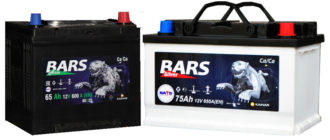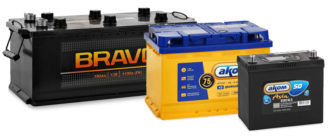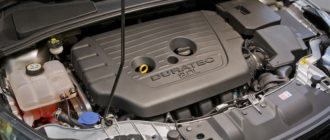During the operation of the vehicle, car owners usually install the battery on their own. As a rule, they are guided by intuitive skills in their actions, neglecting technical requirements and safety standards. Improper battery installation can damage not only the vehicle, but also its own health.
Content
What you need to install the battery in the car
Before you put the battery, you need to prepare the necessary tools and supplies for installation work.
Depending on the car model, the technical condition of the battery, the status of the terminals, the standard set for installing the battery includes:
- open-end wrenches or spanners for 10 and 13 (other options are possible);
- pliers;
- mounting knife (for stripping wires);
- emery paper (fine and coarse - for cleaning contacts and terminals);
- special tools for processing contacts and terminals in order to prevent their corrosion (you can use lithol, solid oil or silicone grease in the form of a spray);
- personal protective equipment (see the next section);
- multimeter to control battery charge voltage.
Safety precautions
The main hazards when working with the battery are:
- the possibility of high currents flowing in the event of a short circuit, sparking and overheating of live parts (tools);
- aggressive chemical properties of electrolyte;
- a large mass of batteries.
Given the above hazards, the following safety precautions must be observed when installing the battery:
- strictly comply with the installation process;
- use work clothes made from natural materials;
- shoes should be tight (boots, work boots);
- use rubber gloves and safety glasses as personal protective equipment (protection against electrolyte getting into the body and eyes in case of unforeseen circumstances).
Preparatory work
Before installing the battery in a regular place of the car, it is necessary to carry out a set of preparatory work:
- Clean the regular place of installation of the battery from dirt, dust, foreign objects. If you decide to supply a larger battery, you need to make sure that the fit is consistent. Note that during operation, the battery must be well ventilated, cooled. Otherwise, it can boil, especially in the warm season. Therefore, in the literal sense, "push" the battery under the hood should not be.
- Check the battery voltage, electrolyte level (in the serviced version). The voltage measured with a multimeter should be between 12.6 and 12.9 volts. If it is less than the lower threshold, the battery should be recharged. In stationary conditions, this is easier than on a car.
If you are installing a pre-owned battery, it is advisable to check the electrolyte density. At a temperature of 25 degrees Celsius, it should be in the range from 1.26 to 1.30 grams per centimeter cubic. A density meter must be used to control density.
If you purchased a battery of dubious quality, you can check its inrush current. This is done using a special load fork. Many sellers make a control measurement of current before transferring the goods to the buyer, and rightly so.
- Assess the quality of contacts and terminals.If necessary, they must be cleaned: first with large, then with fine sandpaper. If it is missing, you can perform a knife stripping. The starting current depends on the quality of the contact - this is one of the main characteristics of the battery.
How to put a battery in a car
In order to avoid short circuits, damage to the electrical equipment of the car, the battery should be installed strictly following the following sequence of work:
- Install the battery in a regular place. Check that the polarity of the terminals matches the plus and minus positions on the battery. When installing in the dark, you can use the relief signs + and - on the battery. In addition, you should know that the positive output of the battery is thicker (19.5 mm) than the negative (17.5 mm). Three-level reverse polarity protection is not accidental. If you install the battery in reverse polarity, half of the fuses will burn out, the generator will fail, there may be serious problems with the electronics of the car.
- Fasten the battery to a regular place using a bracket or bracket.
- Install a gas vent on the battery, if any. The gas outlet is usually installed if the battery is in the cabin or trunk. It is designed to remove gaseous products of charge-discharge processes from the battery.
- Connect the terminals. Connection Sequence:
- put the positive terminal first (in this case, if the key that fixes the terminal touches the mass of the car, there will be no short circuit, since the negative terminal is still disconnected);
- install and fasten the negative terminal.
- Perform a test run of the engine.
- Treat contacts and terminals to prevent further corrosion.
Which terminal to put first on the battery: First connect the positive terminal, and then the negative. It’s important not to mix it up!
What to do if the car does not start
If the engine did not start due to a poor start of the starter, check the quality of the contacts on the battery terminals, clean them and connect them again. If this does not help, check the connection of the negative terminal to the car body, engine bed. It is possible that during dismantling or installation work, contacts in the places of these connections have loosened.
Such a situation is possible if a battery with a smaller capacity or with a long service life is installed in the machine. In this situation, replace the battery with a new one.
Failure to start the engine is possible due to software failures in the electronics of the car associated with the discharge or disconnection of the battery. In this case, you can try to remove the negative battery terminal for 15-20 minutes, then reconnect.
If the battery replacement is associated with prolonged parking or battery discharge as a result of leaving the ignition in the on position, malfunctions in the immobilizer system may occur. In such a situation, it is extremely difficult to start the engine without the help of a specialist.
Failure to start may be associated with the operation of car alarms in emergency mode. You can try to restart it according to the instructions.
How to restore settings after connecting the battery
In some cars, after reconnecting the battery, the on-board computer, car radio, other electronic devices and additional equipment are reset. An error message may appear on the dashboard.
In this case, you must connect the car to the diagnostic scanner, read and delete all errors. As a rule, errors related to the low voltage of the on-board network will then be deleted. Other settings, such as car radios, will have to be restored manually.
Still have questions about installing battery or have something to add? Then write to us about it in the comments, this will make the material more useful, complete and accurate.











